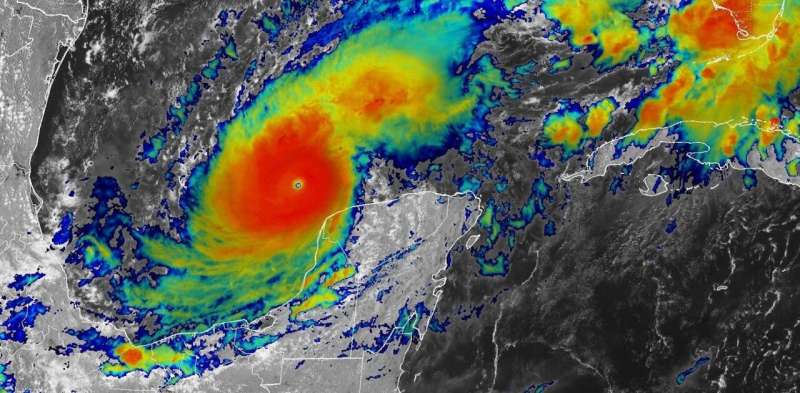This blog post delves into the phenomenon of rapid intensification, where hurricanes can transform from barely hurricane-strength to catastrophic Category 5 storms in less than 24 hours. We explore the driving forces behind this alarming trend, including the role of global climate change and its impact on tropical cyclone behavior. With vivid examples like Hurricane Milton and the devastating effects of hurricanes like Michael and Ian, this article sheds light on the urgent need to understand and address the escalating threat of rapidly intensifying storms. Hurricanes, Climate Change

The Terrifying Transformation: Understanding Rapid Intensification
Hurricane Milton’s explosive intensification, surging from barely hurricane-strength to a devastating Category 5 storm in less than 24 hours, is a prime example of the alarming phenomenon known as rapid intensification. This rapid increase in a tropical cyclone’s maximum sustained wind speed, defined as at least 30 knots (35 mph) within a 24-hour period, can be enough to escalate a storm from a Category 1 to a Category 3 on the Saffir-Simpson scale.
Milton’s wind speed skyrocketed from 80 mph to 175 mph, and its central pressure plummeted from 988 millibars to 911 millibars, with most of that intensification occurring over just 12 hours. This rapid transformation can catch people off guard, especially when it happens close to landfall, as seen with Hurricane Michael in 2018 and Hurricane Otis in 2023. The National Hurricane Center had warned that Milton was likely to become a major hurricane, but the speed of its intensification was unprecedented, posing a grave threat to Florida.
The Alarming Trend: Climate Change and the Rise of Rapid Intensification
If it seems like you’ve been hearing more about rapid intensification in recent years, there’s a good reason for that. A 2023 study has found an increase in the number of tropical cyclones experiencing rapid intensification over the past four decades, including a significant rise in the number of hurricanes that rapidly intensify multiple times during their development.
This trend is not merely a coincidence, as research indicates that it is likely linked to the effects of human-induced climate change. Comparing data from 1982 to 2017 with climate model simulations, scientists have found that natural variability alone cannot explain the increases in rapidly intensifying storms, suggesting a direct connection to the warming of our planet and oceans. As global temperatures and ocean temperatures continue to rise, the frequency of major hurricanes is projected to increase, with the extreme storms of recent years, such as Beryl in 2024 and Helene, serving as a dire warning of the intensifying impact of climate change on tropical cyclone behavior.
Navigating the Uncertain Future: Preparing for the Intensifying Threat of Hurricanes
The rapid intensification of hurricanes like Milton, Michael, and Otis underscores the urgent need for improved forecasting and preparedness measures to protect communities in the path of these powerful storms. While rapid intensification can be difficult to predict, understanding the underlying factors and the link to climate change can help inform more effective planning and response strategies.
As the frequency and intensity of major hurricanes continue to rise, it is crucial for policymakers, emergency management teams, and local communities to work together to strengthen resilience and adapt to the new realities of a warming world. This may involve enhanced early warning systems, improved infrastructure, and comprehensive disaster planning that takes into account the heightened risk of rapidly intensifying storms. By acknowledging the role of climate change and taking proactive steps, we can better safeguard lives and minimize the devastation caused by these increasingly powerful hurricanes.
